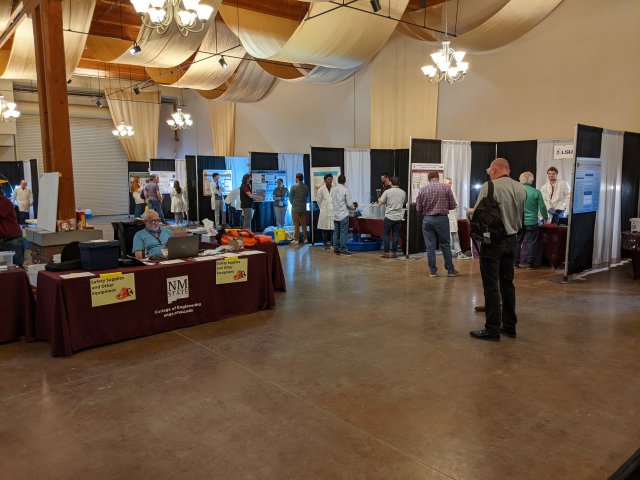EPA Experts Support the Next Generation of Environmental Researchers at Student Design Contest

Published May 24, 2022
EPA experts have been hard at work to inspire college students to think critically and apply their engineering skills to environmental issues. In April, one such effort came to fruition at the 32nd Annual WERC Environmental Design Contest.
WERC is a unique design competition that brings industry, government, and academia together in search of improved solutions to today’s environmental challenges. Students take the lead as consulting engineers, developing an entrepreneurial mindset as they work in teams to solve challenging real-world tasks that address research and development needs. It draws hundreds of college students from throughout the United States and around the world, who report their findings through research papers, presentations, and bench-scale demonstrations.
This year, EPA planned and co-sponsored a task for students to complete as part of the contest: to design an online system for monitoring virus removal during membrane bioreactor (MBR) treatment for water reuse. MBR treatment systems have a smaller footprint than alternatives and produce reliable, high quality effluent, yet receive few pathogen removal credits due to their lack of established validation and monitoring frameworks. Virus monitoring is a notable technical challenge and was also the subject of $6M in recent EPA research grant awards.
EPA researchers Drs. Nichole Brinkman and Michael Jahne travelled to New Mexico State University to judge the student teams and see how they fared on the task. Dr. Brinkman is a microbiologist with expertise in viral pathogens and surrogates and Dr. Jahne is an environmental engineer specializing in microbial risk assessment. They work together to develop risk-based guidance for water reuse, including monitoring approaches like those requested in the task.
At this year’s contest were 21 teams representing 13 universities across 9 states. During the event, each team gave a formal oral presentation, hosted a poster Q&A session, and demonstrated a bench-scale version of their solution, in addition to preparing a full written report in advance. Three teams competed in EPA’s task to design a virus monitoring system for MBR treatment. What our judges saw really impressed them: all the teams presented innovative, well-designed, and practical solutions that EPA researchers and others can further consider as they continue to advance the science of water reuse.
The overall winner was California Polytechnic State University, San Luis Obispo (Cal Poly), whose team won both the task and bench-scale demonstration awards for their impressive system using in-line ultrafiltration and nucleic acid staining to rapidly detect virus breakthrough in MBR effluent. Their solution recognized the need to concentrate viruses for detection and included a low cost, low waste measurement method that could be deployed within an automated system at wastewater treatment facilities. University of Colorado Boulder earned a judge’s choice award for overcoming the challenges of laboratory restrictions that prevented microbial testing by including an online turbidity monitoring backup in their design – exactly what real-world engineers and operators would do. The team from Louisiana State University also designed an excellent system using a rapid and comparatively simple process to detect a high-density indicator virus in treated water.
Congratulations to all on a job well done!
Drs. Brinkman and Jahne had a great time meeting with the teams and were thoroughly impressed with the innovation of their solutions, as well as by their skill and savvy in presenting results. They look forward to next year’s WERC contest and the opportunity to engage with more future scientists and engineers! Read more about the contest here: wercdesigncontest.nmsu.edu
